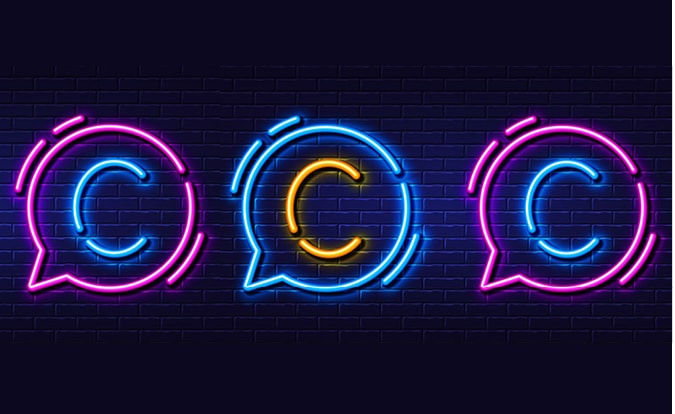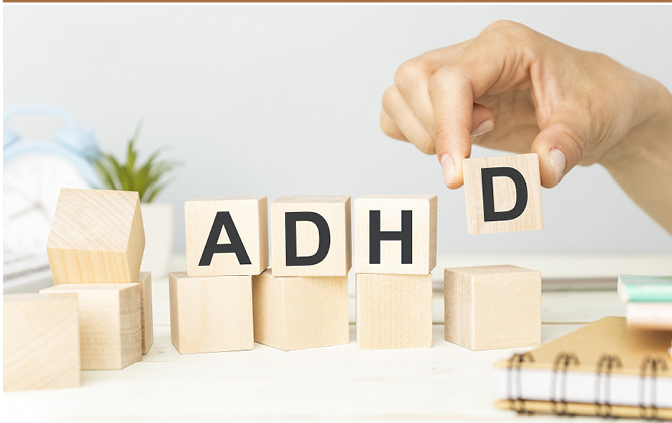
Apple and the Tree – Why Helping the Parents is the First Step to Helping the Children
July 18, 2022
Compassion, Confidence and Collaboration: Helping the Student with ADHD Thrive
July 18, 2022by Rav-Hazzan Scott M. Sokol, PhD
Attention-deficit/hyperactivity disorder (ADHD) is a neurodevelopmental disorder that affects approximately 8% of school-aged children in the United States. In this brief summary article, I will attempt to articulate our current understanding of ADHD, and the ways in which Jewish day schools in particular can be better prepared to manage the needs of students diagnosed with this disorder.
Definitions
The International Classification of Diseases, 11th Revision (ICD-11) defines ADHD as a “persistent pattern (at least 6 months) of inattention and/or hyperactivity-impulsivity that has a direct negative impact on academic, occupational or social functioning.”
Previously, attention deficit and hyperactivity were considered separate psychiatric disorders, but the current Diagnostic and Statistical Manual of Mental Disorders, Fifth Edition (DSM-V) now considers them to comprise one diagnostic umbrella (though the “forward slash” between attention deficit and hyperactivity bears witness to their relative distinctiveness).
The three presentations of ADHD are 1) Predominantly Inattentive Type, 2) Predominantly Hyperactive/Impulsive Type, and 3) Combined Type.
Diagnosis
The diagnosis of ADHD is best made by a psychologist, psychiatrist or neurologist who is well-versed in the disorder and its varieties of presentation. However, other health professionals often make the preliminary diagnosis including pediatricians and other primary care physicians or nurses. ADHD is diagnosed primarily on the basis of behavioral symptoms, which are listed below. Importantly, the disorder should not be diagnosed if symptoms are short-lasting (less than six months long) or observed in fewer than two settings. In other words, behavior in school alone or home alone should not be considered definitive of a clinical diagnosis. It is important to acquire reliable symptomatology from at least two distinct settings and/or raters.
The following is a list of symptoms for the two primary types of ADHD. These are taken from the DSM-V, and constitute the checklist used by psychologists, psychiatrists and neurologists to aid in diagnosis.
Inattention: Six or more symptoms of inattention for children up to age 16 years, or five or more for adolescents age 17 years and older and adults; symptoms of inattention have been present for at least 6 months, and they are inappropriate for developmental level:
- Often fails to give close attention to details or makes careless mistakes in schoolwork, at work, or with other activities.
- Often has trouble holding attention to tasks or play activities.
- Often does not seem to listen when spoken to directly.
- Often does not follow through on instructions and fails to finish schoolwork, chores, or duties in the workplace (e.g., loses focus, side-tracked).
- Often has trouble organizing tasks and activities.
- Often avoids, dislikes, or is reluctant to do tasks that require mental effort over a long period of time (such as schoolwork or homework).
- Often loses things necessary for tasks and activities (e.g., school materials, pencils, books, tools, wallets, keys, paperwork, eyeglasses, mobile telephones).
- Is often easily distracted
- Is often forgetful in daily activities.
Hyperactivity and Impulsivity: Six or more symptoms of hyperactivity-impulsivity for children up to age 16 years, or five or more for adolescents age 17 years and older and adults; symptoms of hyperactivity-impulsivity have been present for at least 6 months to an extent that is disruptive and inappropriate for the person’s developmental level:
- Often fidgets with or taps hands or feet, or squirms in seat.
- Often leaves seat in situations when remaining seated is expected.
- Often runs about or climbs in situations where it is not appropriate (adolescents or adults may be limited to feeling restless).
- Often unable to play or take part in leisure activities quietly.
- Is often “on the go” acting as if “driven by a motor”.
- Often talks excessively.
- Often blurts out an answer before a question has been completed.
- Often has trouble waiting their turn.
- Often interrupts or intrudes on others (e.g., butts into conversations or games)
In addition, the following conditions must be met:
- Several inattentive or hyperactive-impulsive symptoms were present before age 12 years.
- Several symptoms are present in two or more settings, (such as at home, school or work; with friends or relatives; in other activities).
- There is clear evidence that the symptoms interfere with, or reduce the quality of, social, school, or work functioning.
- The symptoms are not better explained by another mental disorder (such as a mood disorder, anxiety disorder, dissociative disorder, or a personality disorder). The symptoms do not happen only during the course of schizophrenia or another psychotic disorder.
Based on the types of symptoms, three kinds (presentations) of ADHD can occur:
- Combined Presentation: if enough symptoms of both criteria inattention and hyperactivity-impulsivity were present for the past 6 months
- Predominantly Inattentive Presentation: if enough symptoms of inattention, but not hyperactivity-impulsivity, were present for the past six months
- Predominantly Hyperactive-Impulsive Presentation: if enough symptoms of hyperactivity-impulsivity, but not inattention, were present for the past six months.
Continuous Performance Testing
In addition to behavioral checklists, a complete diagnosis of ADHD should be based on results from a continuous performance test. Over the past couple of decades, a number of these tests have been developed. Among the most commonly used are the TOVA (Test of Variables of Attention) and the CCPT (Connors Continuous Performance Test). Continuous performance tests typically consist of simple yes/no decision paradigms in which the subject has to quickly identify a target from foils (for example the letter X among other letters). The amount of time in between trials, as well as other conditions are manipulated, and the test can last from 5 to 20 minutes, depending on the particular test being used. Finally, these tests may involve visual and/or auditory modalities.
Continuous performance testing takes advantage of the tendency of a person with ADHD to fail to remain vigilant or discriminating during extended periods of time, especially for low-interest tasks. When properly analyzed, the data from such tests can be very helpful not only to distinguish clinical from non-clinical presentation, but also to determine the specific type of attention deficit a person may have.
Comorbidity
ADHD, though primarily understood as a disorder of attention, coexists commonly with a number of other neurocognitive and/or psychiatric disorders. The two most common and impactful in the school setting are learning disabilities and anxiety.
- Learning disability. Decades of research indicate that ADHD co-occurs with learning disabilities in approximately 30% of students (DuPaul and Volpe, 2009). This comorbidity is far more common with inattentive-type ADHD than hyperactive-impulsive type. Furthermore, the locus of the co-morbidity is likely to be working memory and processing speed, both of which are common aspects to ADHD and learning disorders.
- Anxiety. Co-morbidity of ADHD with anxiety occurs in approximately 25% of cases (Spencer, 2006). Like ADHD, anxiety manifests in cognitive, affective and behavioral/physical symptoms. Many of the specific symptoms seen across these disorders are quite similar (e.g., rumination, agitation, tantrums), and so it is not always clear whether the locus of presenting symptoms is more ADHD- or anxiety-related. In the school setting, however, it is often possible to disentangle the cause with careful attention to the student and face-to-face calming, clarifying conversations.
The Role of Attention in Education
William James, early psychologist and philosopher, was among the first to research the role of attention in learning. Attention is a function of the mind, but results in significant changes in the brain. Focusing our attention on an object creates neural networks that show enhanced excitation when in the presence of that object later on, gaining collective strength by their repeated firing. As Donald Hebb, another early psychologist put it, “Neurons that fire together wire together.”
One of the factors most important to our attentional system is novelty. When something is novel, it tends to catch our attention more readily than something we are already accustomed to. In some cases, attention goes awry, moving its resources to every new experience it comes in contact with, similar to a strobe light. In fact, this is a fairly apt description of what occurs in some individuals with attention deficit disorders (especially of the inattentive subtype). A properly functioning attentional system, in contrast, filters out what is unimportant and focuses on what is salient at the moment.
To assist children and adults with attention deficits, I first try to explain arousal/activation and how this concept relates to performance. Put simply, a cognitive system has to be activated or aroused in order to learn, but peak activation levels vary from person to person. For many individuals with attention disorders, their resting neurocognitive systems (especially in the frontal lobes) are under-aroused, requiring a higher degree of arousal/activation than is typical.
There are several ways that arousal can be enhanced. The first is through reinforcement or reward. Parents know this tact well: “If you work consistently for the next thirty minutes learning your Haftarah, then you can play video games until dinner.” (By the way, one of the reasons that people with ADHD so enjoy and can focus on video games for hours at a time is because of the high degree of constant stimulation that these games supply to their attentional system.) Another method to increase activation is to engage only with material one is already interested in; such material is intrinsically rewarding and thus more likely to maintain arousal. It is unclear whether many Haftarot would be learned, however, if this method were the only one chosen (let alone many required academic subjects).
These are of course more extrinsic means of increasing attentional activation as well. A common method is by means of a stimulant medication such as Ritalin. The stimulant acts to enhance activation on a neurological level, elevating neurochemical activity in synapses, which aids in initiating and focusing attention. Stimulants have been used in the treatment of ADHD for well over a half a century, and have helped many people, although they are not appropriate for everyone. Recently, computer-based programs have been developed that have been empirically proven to increase attention and working memory (e.g., Cogmed). Neurofeedback has also proven effective in many cases.
None of these methods, however, will likely be successful in reducing attentional challenge in students without the participation and pedagogical expertise of a dedicated teacher. Teachers are at the front line when it comes to assisting students with attentional challenge, as will be discussed in other articles in this issue. I would, however, like to make a plug for one aspect of Jewish education that sometimes gets short-shrift and which I believe is especially important to students with attentional challenge, namely experiential education.
Jewish Experiential Education
As just described, attention is driven by novelty and reinforcement, as well as by evolutionary hard-wiring that makes certain sorts of information immediately accessible to the brain (e.g., information that correlates with biological necessities such as fear, hunger, reproduction, etc.). To make learning more attentionally compelling then, we need to increase novelty and reward and/or link the material to be learned through chains of association to other important processing.
I would argue that experiential education tends to do these things more naturally than formal education. Sitting in classrooms day in and day out, having information coming to the learner in highly predictable and consistent ways is frankly a recipe for lowering arousal to levels that are not conducive to typical learners, let alone those with attention deficits. Experiential education such as camps, youth groups, or activity-centered learning, all have greater inherent novelty. Many are also tied more directly to intrinsic, rather than extrinsic reward. Finally, these activities typically have higher degrees of connectedness to biological drives (e.g., a camp ropes course is exciting, Jewish youth activities have potential for attracting mates, cooking classes appeal to our appetites). Jewish experiential education, therefore, seems consonant with what we know about activating and maintaining attention.
Conclusion
In this brief article I have reviewed current diagnostic criteria for attention deficit/hyperactivity disorder, as well as related issues of co-morbidity, and implications for Jewish education. Given the high incidence of ADHD in the student population, it is nearly certain that day school educators will encounter students with this disorder. By taking into consideration their individual needs, we can help to ensure the continuity of mesorah, as taught in Proverbs: “chanoch lana’ar al pi darko gam ki yazkin lo yasur mimena.”
References
DuPaul, G. J., & Volpe, R. J. (2009). ADHD and learning disabilities: Research findings and clinical implications. Current Attention Disorders Reports, 1(4), 152–155.
Mecklenburger, R. (2012) Our Religious Brains: What Cognitive Science Reveals about Belief, Morality, Community and Our Relationship with God. Woodstock, VT: Jewish Lights Publishing.
Sokol, S.M. (2014). Neuroscience and experiential Jewish education. In D. Bryfman (ed.), Experience and Jewish Education, (pp. 55-64). Los Angeles, CA. Torah Aura Productions.
Spencer, T.J. (2006). ADHD and comorbidity in childhood. Journal of Clinical Psychiatry, 67 (suppl 8), 27-31.
Rav-Hazzan Scott M. Sokol, PhD, serves as head of school at the Schechter School of Long Island. Prior to his cantorial ordination and rabbinic semicha, he received MA and PhD degrees in cognitive neuropsychology from Johns Hopkins University. He is also board-certified pediatric neuropsychologist, and formerly served as a research scientist, clinician, and professor of neurology at Massachusetts General Hospital and Harvard Medical School. Sokol has evaluated hundreds of students with attentional and/or learning disorders and has consulted with many families in the day school world about their children’s neurocognitive and academic needs. [email protected].

